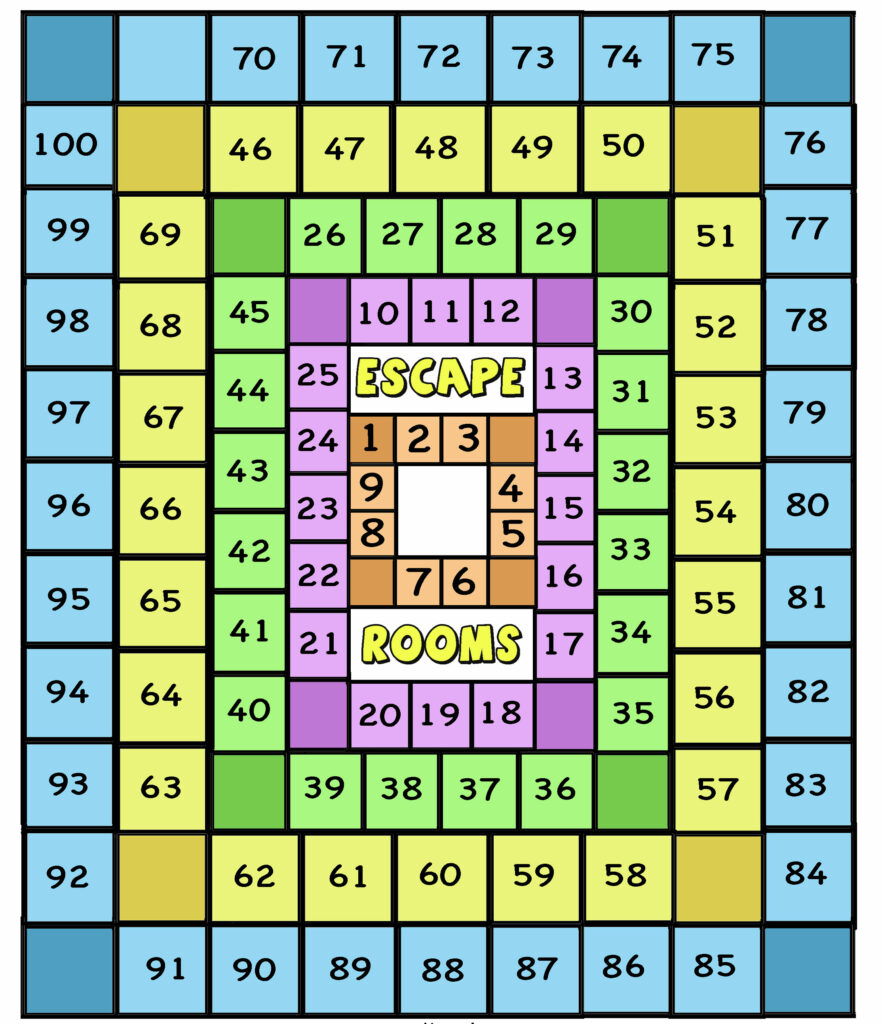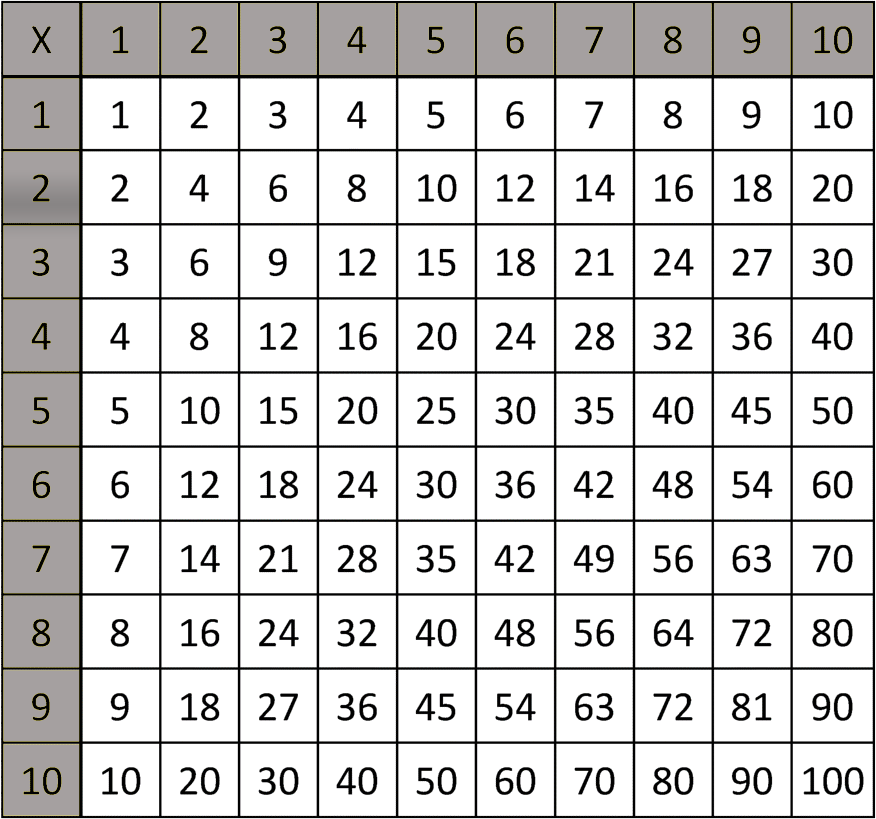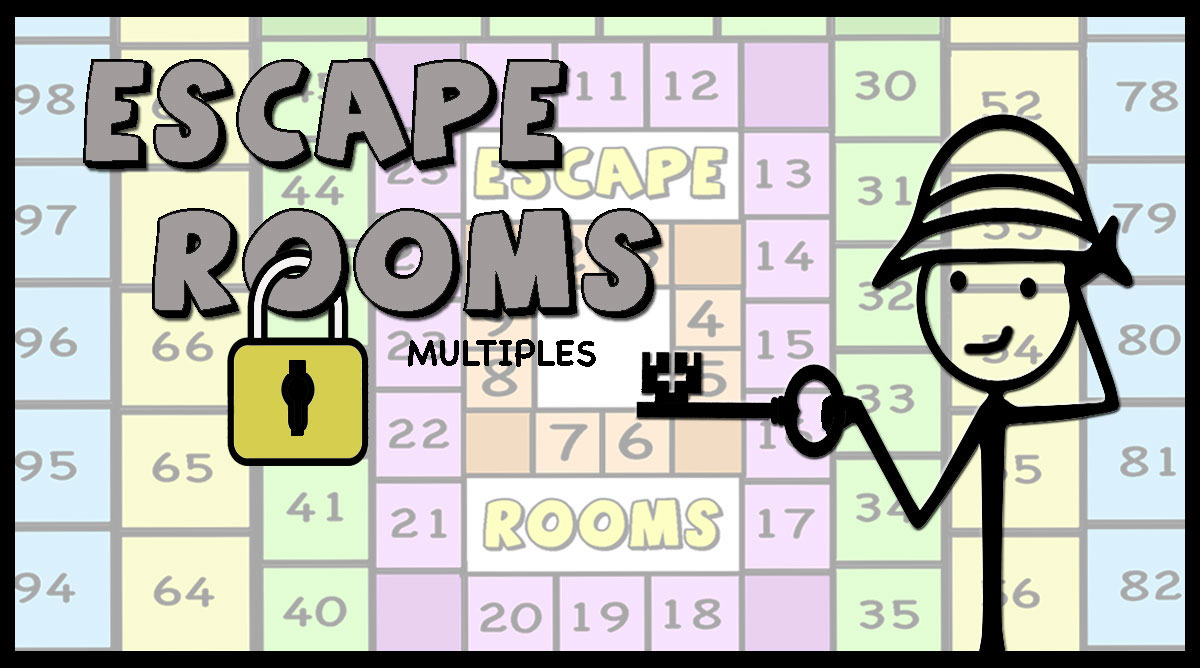“Escape Rooms” can be played as a single-player or as a multiplayer game. It allows players to practice multiplication facts, division facts, factors, and multiples.
Similar to Maze Escape this game allows the players to practice one table at a time. The players choose a key-number and they try to land on one of its multiples to unlock the door and escape each room.
Material:
- A print out of the game board ( you can print the two parts separately to make a bigger game board)
- A dice
- A small object for each player to use as a position marker.
The goal is to escape each room and finally be the first one to make it out of the last room.

How to play
The players decide on a key-number 3-9. (they practice the multiples of this number) They can write it in the middle. Then, they take turns rolling the dice. They start from the middle room and they can place their marker on any one of the darker tiles in the room. They roll the dice and move around the room in any direction. Their goal is to and land on a multiple of the chosen number in order to escape and move to the next room. The key-number only opens the doors with its multiples. As they roll the players can choose which direction to move. Every time you escape a room and move to the next one you can choose which of the darker/empty tiles to start from and wait for your next turn to roll.
The first player to escape the last room is the winner.
Different number-keys: Each player can decide to choose a different key- number, however, the players might have uneven chances to escape each room because some key-numbers have more multiples than others. For example, 3 has a lot more multiples than 8 among the numbers 1-101. It is a good idea to let younger children (siblings) choose smaller key-numbers. The game is fairest if the players choose the same key-number or numbers with the same (almost) number of multiples, like 8 and 9.
Important: This game aims to encourage students to practice math. Make sure that you provide a multiplication table to enable all students to play and practice. When games start to feel like tests students get discouraged.

You can play the game digitally as well. Save the game board on a tablet or a computer.
As many of you requested the digital versions of our games are coming soon.
Here is the game board to print or save. I print these games with the instructions at the back, laminate them and keep them as math stations. I often give them as homework as well. I let the students borrow them to play with their parents.
For a bigger gameboard, you can print the two bigger parts and join them with some clear tape.
Find the google slides version of the game here

